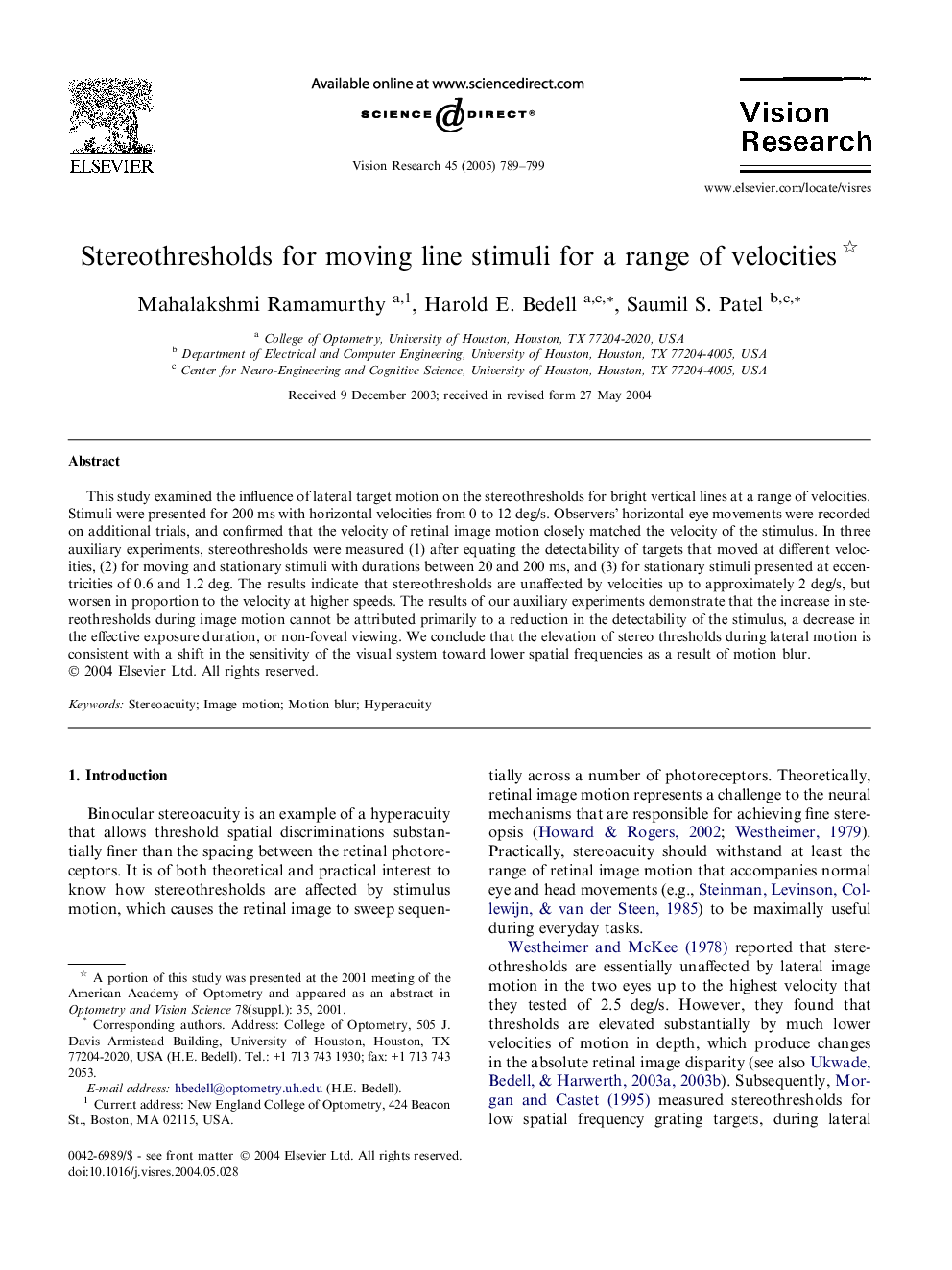| Article ID | Journal | Published Year | Pages | File Type |
|---|---|---|---|---|
| 9348581 | Vision Research | 2005 | 11 Pages |
Abstract
This study examined the influence of lateral target motion on the stereothresholds for bright vertical lines at a range of velocities. Stimuli were presented for 200 ms with horizontal velocities from 0 to 12 deg/s. Observers' horizontal eye movements were recorded on additional trials, and confirmed that the velocity of retinal image motion closely matched the velocity of the stimulus. In three auxiliary experiments, stereothresholds were measured (1) after equating the detectability of targets that moved at different velocities, (2) for moving and stationary stimuli with durations between 20 and 200 ms, and (3) for stationary stimuli presented at eccentricities of 0.6 and 1.2 deg. The results indicate that stereothresholds are unaffected by velocities up to approximately 2 deg/s, but worsen in proportion to the velocity at higher speeds. The results of our auxiliary experiments demonstrate that the increase in stereothresholds during image motion cannot be attributed primarily to a reduction in the detectability of the stimulus, a decrease in the effective exposure duration, or non-foveal viewing. We conclude that the elevation of stereo thresholds during lateral motion is consistent with a shift in the sensitivity of the visual system toward lower spatial frequencies as a result of motion blur.
Related Topics
Life Sciences
Neuroscience
Sensory Systems
Authors
Mahalakshmi Ramamurthy, Harold E. Bedell, Saumil S. Patel,
